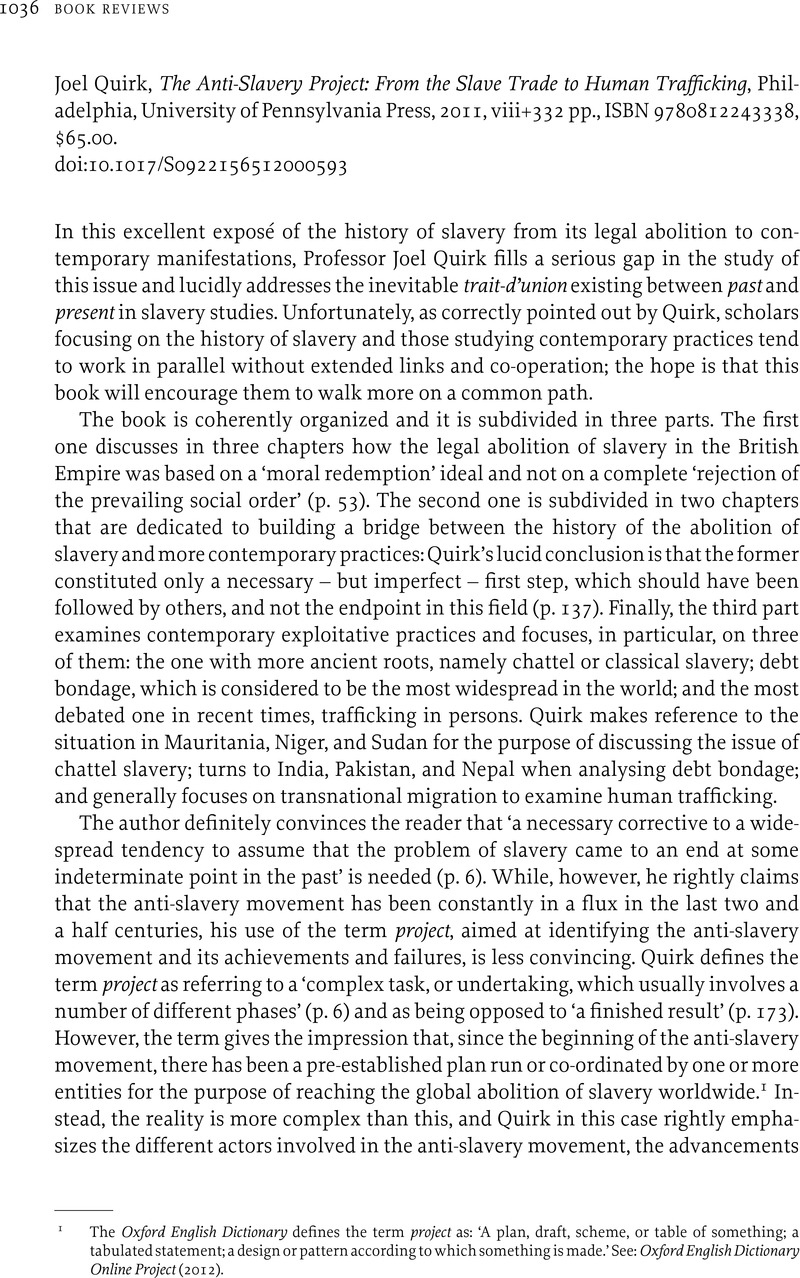No CrossRef data available.
Published online by Cambridge University Press: 01 November 2012

1 The Oxford English Dictionary defines the term project as: ‘A plan, draft, scheme, or table of something; a tabulated statement; a design or pattern according to which something is made.’ See: Oxford English Dictionary Online Project (2012).
2 The Working Group held its first session in 1975 and its last one in 2006. It changed its name in 1987 and renamed itself the Working Group on Contemporary Forms of Slavery.
3 Report of the Working Group on Slavery on Its First Session, UN Doc. E/CN.4/Sub.2/AC.2/3 (1975) at 4, § 11. Emphasis added.
4 Report of the Working Group on Slavery on Its Twelfth Session, UN Doc. E/CN.4/Sub.2/1987/25 (1987) para. 114(2).
5 It is worth recalling, however, that the mandate given to the Working Group by ECOSOC mentioned the abolition of slavery in all its forms, including the slavery-like practices of colonialism and apartheid. See Economic and Social Council Decision 16 (LVI) of 1974.
6 D. Weissbrodt and Anti-Slavery International, Abolishing Slavery and Its Contemporary Forms (2002) 41.
7 Ibid., at 43. Jean Allain instead incorrectly states that the Report included within the rubric of slavery-like practices ‘not only forms of servitude but also sex tourism, mail-order brides, apartheid, colonialism, and incest’ without further clarifying the specific conclusions reached by the Report for each one of these practices. See Allain, J., ‘Book Review: Silvia Scarpa, Trafficking in Human Beings: Modern Slavery’, (2009) 20 EJIL 453, at 454CrossRefGoogle Scholar.
8 UNODC, Legislative Guides for the Implementation of the United Nations Convention against Transnational Organized Crime and the Protocols thereto (2004) 276, para. 45(a).
9 Article 3(a) does not define the term exploitation but says that it includes, inter alia: ‘[T]he exploitation of the prostitution of others or other forms of sexual exploitation, forced labour or services, slavery or practices similar to slavery, servitude or the removal of organs.’